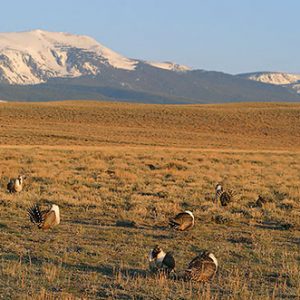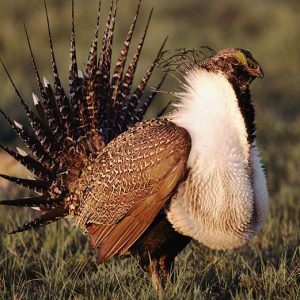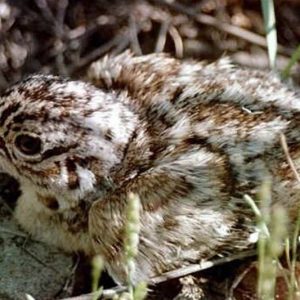Today I looked at the calendar and came to the realization that I started my internship four weeks ago. Time is flying! The first week I was bombarded with a countless number of acronyms and planning handbooks. I am starting to get a handle on the acronyms. The planning process, on the other hand, is chock full of curve balls. By the end of my term, I will certainly have a handle on the required steps for new plans, revisions, and amendments that fall under the Federal Land Policy and Management Act. I have quickly learned that the real hurdle is attempting to achieve collaborative planning. This may be more of an ideal than a reality, because stakeholders will not be completely satisfied with the final outcome.
By week two, my two wonderful mentors had me knee deep in Wyoming’s role in the listing of sage grouse under the Endangered Species Act. Wyoming houses 50% of the population, so the welfare of the bird is truly dependent on Wyoming taking a lead role in the implementation of sage grouse conservation measures. The strategy going forward is called ‘core area’ protection (described in WY IM 2010-012 and -013). Sage grouse crucial habitat has been mapped and the plan is to set specific timing, distance, and density stipulations that keep disturbance to these areas at a bare minimum. Other key components to the strategy include maintaining habitat connectivity, reclamation of sage grouse habitat, and effective monitoring. Being that BLM land is managed for multiple-use and sustainable yield, there are a number of conflicting interests. It would be economically challenging to the state if the bird were listed. Therefore, it is in the best interest of industry to promote and implement the strategy which allows for the continuation of oil and gas leasing in addition to improved conservation measures.
The Wyoming State Office is heading the project of preparing an Environmental Impact Statement and Resource Management Plan Amendments for Casper, Kemmerer, Pinedale, Rock Springs, Newcastle, and Rawlins field offices. For each involved field office, I was assigned the task of transferring all the decisions from the resource management plans into tables and organized them by resource. For each resource, I took a stab at whether or not the decisions would need to be altered based on sage grouse policy and whether or not an Environmental Impact Statement would be required. The following week, I joined my two mentors on a whirlwind tour of four BLM field offices to kick-off the sage grouse amendment process. I am lucky to have the opportunity to work with two gentlemen that are extremely passionate about outdoor Wyoming. I have the inside scoop on Wyoming’s best fishing holes….hopefully I will lean to fish sometime soon!
At the first meeting, I was flabbergasted that it would take 2.5 years to complete the amendment process. This is supposedly a ‘rushed’ time schedule. I knew policy moved slowly in Washington, but my goodness keeping a high level morale among the people will be an additional task. Overall, the sage grouse kick-off meetings went quite well. There was some commotion and apprehension to jump on board to a daunting work load, but that is expected and warranted. The people are concerned about the welfare of the sage grouse and certainly want to do their best. By the end of the week, I had a full understanding of the tremendous amount of work that would be involved and clearly understood why a 2.5 year schedule would scare all involved parties.
Tiffany Gregg
Bureau of Land Management
Cheyenne, Wyoming



